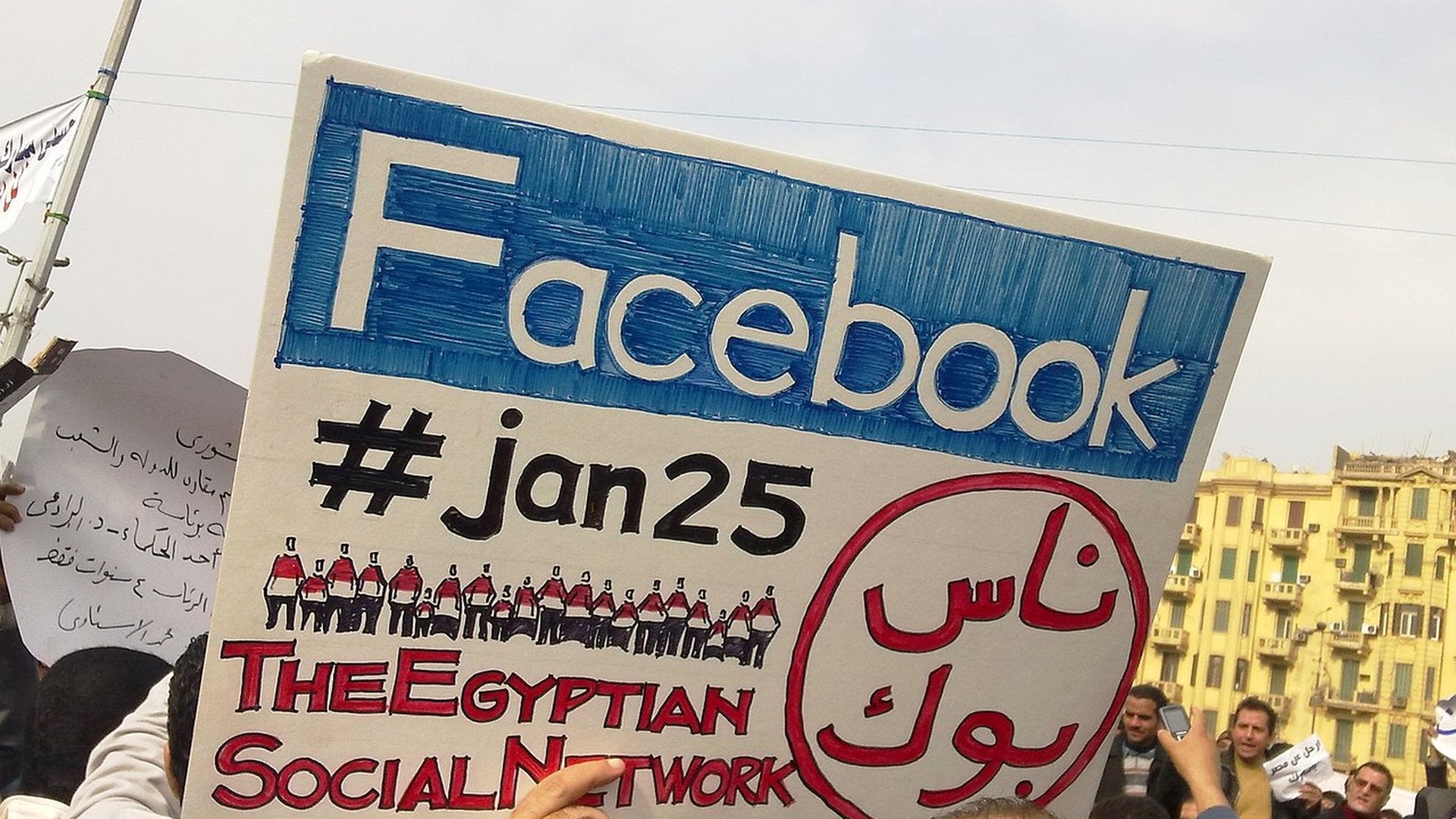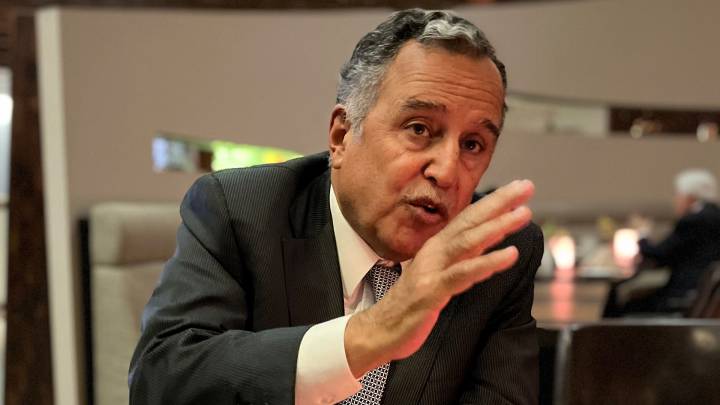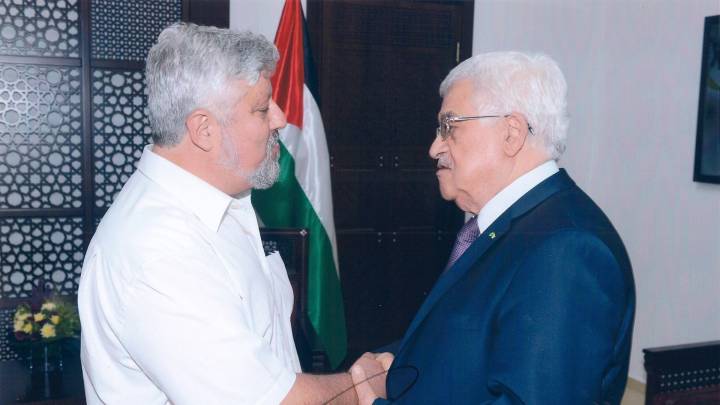In the Middle East in particular, a hybrid order is taking shape. It is time for international diplomacy to implement new, more inclusive and holistic tools that address the conflicts of today and tomorrow, argues Spanish diplomat Ramon Blecua.
The increasingly intricate fabric of peace and conflict and the multiplicity of actors involved have made conflict resolution more complex, as the recently adopted EU concept note on mediation states. Terrorism and radicalisation have become a more imminent security threat and tensions related to environmental degradation, irregular migration and forced displacement, are affecting the social fabric in fragile states in unprecedented manners.
In its efforts to address the multifaceted challenges that conflict resolution and crisis management pose to us, the European Union External Action (EEAS) has included cultural heritage, environmental peace building, gender equality, inter-religious dialogue and other issues previously absent of the mediation analysis as some of the new instruments in its conflict resolution toolbox.
The international system as we know it is in flux and the rapid transformations which are currently taking place as a result of the response to the Covid-19 pandemic will have far-reaching impliccations not only for how international relations are conducted but for every aspect of our social and economic life.
Effective mediation and conflict resolution mechanisms are increasingly relevant, as the number of people affected by conflict and violence grows
Non-state actors traditionally have been considered an anomaly or a disturbance to the existing international order, and the term is mostly applied to define terrorist groups or militias that are considered a threat to regional stability. However, the influence of powerful non-state actors is becoming more relevant at shaping state policy than the classic power competition among states, while getting intertwined with it.
The real game changer is that states are not the only protagonists anymore and they have to deal with the increased power and influence of transnational corporations, of which Big Tech is the ultimate example, private military forces and militias, transnational terrorist organizations and the staggering wealth of criminal groups and drug cartels. The privatization of surveillance technology and military services is probably the clearest symptom that even global powers need to rely on these private corporations to conduct warfare, which is changing the nature of international relations.
Despite all the challenges described above, effective mediation and conflict resolution mechanisms are increasingly relevant, as the number of people affected by conflict and violence grows. Civil wars are leading to more protracted conflicts with ethno-cultural components that complicate the traditonal political approach. The combination of great power competition, regional struggles for hegemony and non-state actors proliferation create interlocked and multilayered conflicts that affect international peace and stability.
Traditional diplomacy and intergovernmental conferences are increasingly ineffective to address the current problems of conflict resolution
At the same time, these elements are challenging the traditional appproach as recognized by the new strategic plan of the UN Department of Political and Peacebuilding Affairs 2020-2022. The international multilateral order is being questioned from many different quarters while the wave of global protests shows the exhaustion of economic and political models, as well as the need for a new social contract.
Traditional diplomacy and intergovernmental conferences are increasingly ineffective to address the current problems of conflict resolution and the role of the UN has been eroded in recent years. The case of Libya is a good example of how intense mediation efforts, conducted by the Centre for Humanitarian Dialogue (HD) in coordination with the UN, managed to produce significant results that paved the way for the formation of the National Unity Government.
New alliances and more result-oriented processes have to be put in place to bridge the gap between international principles and the demands of civil society and the new international actors. Track 2 dialogues and mediation initiatives are increasingly used, operating through coalitions of UN agencies, international mediation actors, the Eupean Union and like-minded states. The redefinition of the concptual framework and the mediation toolbox that the UN and the EU are currently engaged in is particularly important in the foundation of a new multilateral system.
This article will concentate on these new instruments, with particular focus on the Middle East, the region of the world where a disproportionate number of those conflicts takes place. Paradoxically, there is a shocking imbalance between the number of mediation initiatives in the region and, local input and context-specific narratives in the field.
The new forms of warfare are bringing IT platforms to the forefront of regional conflicts as parties
Building local capacities has been largely neglected and the culturally rooted tools are often disregarded. Cultural heritage, material and inmaterial, as well as environmental peacebuilding, intercultural and interfaith dialogue could be effective entry points in the conflict cycle in a new approach that includes more empathic and emotional components in the peacebuilding process.
Conflicts are increasing, with a multiplicity of new actors and an erosion of the multilateral system in a globalized environment increasingly disoriented. Polyarchy has replaced the structured power relations of the bipolar order, states with diminished sovereignty and powerful non-state actors are engaged in new relationships that, combined with the impact of AI and new digital tools, will change the nature of international dynamics.
The most novel players in this new world are technology and social media corporations. These firms specialize in surveillance—whether voluntary or involuntary. Firms such as Facebook, Google or LinkedIn use voluntary surveillance—living on the data that users voluntarily allow them to access, or arguably own. However, as demonstrated on numerous occasions, this data can also be used to manipulate users providing information that is skewed or simply false.
The new forms of warfare are bringing IT platforms to the forefront of regional conflicts as parties. On the other end of the technology spectrum are firms that use involuntary surveillance—using data without the user’s knowledge, whether that data is public or private, and can be accessed legally or illegally.
AI could become a powerful instrument for monitoring the effect of those campaigns that have turned social media into the new battlefield
However, any “big data” system can be used for predictive analytics to surface behavior, given the proper data inputs. Even without hacking, the consolidated picture from correlated publicly traded data can give insights that would often disturb the individuals involved. The impact of the Covid-19-related tracking of personal data is another example of the potential of these surveillance technologies. This scenario will be significantly amplified by the expansion of 5G-related sensor-fed real-time flows and smart cities operating on huge data collection systems.
AI is emerging as a field with a potentially huge impact on politics, society and the economy, an influence which ultimately stretches to international and diplomatic relations. In response to AI’s widely acknowledged impact on global diplomacy and in the practice of mediation and conflict resolution there is a need to raise awareness about what has been defined as tech diplomacy, and especially AI’s influence on mediation, peace-making and conflict resolution. It is becoming increasingly relevant to explore potential synergies and collaborative approaches between the diplomatic and technology communities.
AI is increasingly used in the conduct of warfare, intelligence and disinformation operations, but it could also become a powerful instrument for monitoring the effect of those campaigns that have turned social media into the new battlefield of our time and channel positive messaging that would contribute to conflict prevention and resolution.
Global technological governance is still in its infancy, and the questions far outnumber the answers today. AI poses challenges to democracy, cybersecurity, cyber-diplomacy, autonomous lethal weapons and human rights. We are witnessing a growing trend with governments who prepare legislation to limit technologies powered by AI, but it is unclear if this would reverse the changes in conflict dynamics.
The debate will focus on the fact that active social media users may not be representative of the population as a whole
Regarding security and defence —including the management of insurgencies and organized non-state actors—, AI technology can alter the costs of conflict, accelerate the operational speed, and raise the risk of escalation, increase the perceived risks of surprise attacks, enhance access to intelligence among warring parties, and shift public opinion about involvement in conflicts. It also brings new stakeholders into the crisis management process that have the technical expertise required to apply AI methodologies in pre-conflict, conflict or post-conflict monitoring.
Additionally, authoritarian states where data collection restrictions are laxer, will have more access to consistent big data and be able to take advantage of AI in warfare. Therefore, new conflicts may arise about who has control over and access to online data collection.
The use of AI technologies continues to raise ethical and practical concerns, but its use in active conflicts and peace processes has already begun. We only know about a fraction of those actors using this technology, such as the UN, but there are many other actors that do not declare openly when they move in this shadowy world.
The UN’s Innovation and Technology Unit of the Field Technology Section has launched a Big Data Analytics and Digital Media Support Project in Somalia and the UN’s Middle East Division (MED) has already been working with a machine learning-based system for detecting and analysing public opinion in the Arab world.
Apart from ethical issues, the question is whether AI-based instruments can improve peace practitioners’ understanding of conflicts and provide access to the broader population to which mediators do not have access. Still, the debate will focus on the fact that active social media users may not be representative of the population as a whole, calling into question the validity of AI-related outputs in the process and the distorting effects that its use may entail.
The situation in the Middle East offers a particularly stark example of how this crisis can accelerate a process of authority fragmentation
The Middle East has been in turmoil since 2011 as a result of uprisings that rocked existing political structures in the Arab world. The series of events that followed are much deeper than a change of political elites or replacement of authoritarian rulers, but rather a systemic crisis that has shaken the foundations of the regional order and the legitimacy of state institutions.
The situation in the Middle East offers a particularly stark example of how this crisis can accelerate a process of authority fragmentation, institutional collapse, mismanagement, rampant corruption and failed governance. Syria, Lebanon, Iraq, Libya or Yemen already can be considered test cases of this neo-medieval model of fragmented authorities and overlapping loyalties, in which non-state actors are already the main decision-makers.
The context in which non-state actors are operating is defined by the demise of the social contract between the citizens and the state as a result of complex socioeconomic changes. The failure of the economic systems in most Arab countries to offer jobs and services to bulging populations with uncontrollable demographic growth fuels discontent that is changing political dynamics.
The other factor that limits the state’s ability to react to those challenges is the sclerosis of political systems based on authoritarian models. The impact of social media in consolidating the recent protests movements in the region has been a surprise to the traditional elites of the states affected, sparking accusations of foreign interference and destabilization operations.
Cultural heritage has become part of the expanded battlefield
What we are witnessing is a transformation of the traditional state into what is now defined as a “hybrid state” in which there is no monopoly of force and security structures. Decision-making is channeled through state institutions but made elsewhere by actors outside the formal legal system. State institutions remain in place, but the operating system has been modified to accommodate the interests of those influential players that prefer to remain in the shadows.
When trying to understand hybrid actors in hybrid states, such as the PMU in Iraq, it is not helpful to think in terms of rigid binaries between state and non-state, formal and informal, and legal and illicit. Armed militias, terrorist groups and criminal organizations thrive in the gray areas of the war economy, a result of the combination of sanctions, armed conflict and state-controlled economies that have plagued the Middle East for years.
Cultural heritage has become part of the expanded battlefield and unrestricted warfare of the conflicts of our age, as multiple actors struggle to reshape the political narratives and the identity lines of increasingly fractured societies. The brutal actions of IS against minorities or against cultural heritage were neither random not irrational, but a calculated strategy to shape a new political identity. If we ignore that as an anomaly and do not reverse those actions with decisive efforts and well-designed initiatives, we would not only be losing memories of our past but the inspiration for our future.
Prevention of violent conflict is fundamental in addressing the security challenges facing Europe, its neighbourhood and beyond, and at the same time an enabler for political and social advancement and human security. Preventive diplomacy serves to prevent conflict from arising between parties and to avoid the escalation and spread of conflict. Mediated processes and dialogue can be a key pathway to peace by addressing emerging crisis and conflict at an early stage and have the merit of handling tensions before positions have become entrenched. Preventing conflict is one of the most difficult aspects of mediation, because it requires a certain degree of foresight and anticipation.
The begining of the War on Terror continues to shape the international mindset
New systems of organising state and society, and the rise of new state, quasi-state and non-state actors are reshaping the future of the region. The importance of creating different narratives around cultural, ethnic or religious identity to support those political objectives is leading to a weaponization of cultural heritage. The crafting of singular and non-pluralistic narratives is reflected in state policy and interventions in society, creating unprecedented cultural appropriation, neglect and transformation of cultural sites and intangible cultures, in ways that will shape the future of our societies.
A new EU agenda based on the convergence of heritage and peacebuilding, conflict prevention and mediation and dialogue can underpin international support to help rebuild societies. Cultural heritage heralds a new opportunity for the revitalisation of peace work. Peace-oriented heritage approaches should attempt to strengthen degraded cultural heritage infrastructures on the basis of diversity and human dignity.
Anchoring international support on essential heritage priorities will support existing structures, people and institutions and reap visible benefits. A cultural heritage approach to peacebuilding should bring otherwise disparate themes, projects and tools within the ambit of a guiding framework to inform the EU’s engagement in conflict resolution, as stated in the new Strategy for Cultural Heritage in Crisis and Conflict.
Intercultural and interreligious dialogue have been a response to the dramatic events of 2001 and to those theories of cultural conflict as a replacement of the ideological divide of the Cold War. Samuel Huntington’s “Clash of Civilizations” became the beacon of those who predicted an endless cycle of international wars based on civilizational incompatibilities. The begining of the War on Terror, also called “the forever wars”, continues to shape the international mindset despite the different initiatives that have been launched since to bridge the cultural divide.
The EU has a comparative advantage in the field of the new conflict resolution strategies
The Alliance of Civiliations was established in 2005 as a key component of the peace and security agenda of the UN. The new action plan of the Alliance of Civilizations 2019/2023 is focused on conflict prevention, mediation and fight against radicalization and terrorism, but it is still not being effectively implemented, partly due to the impact of the pandemic but also for lack of enough resources and political support.
Conflict prevention and conflict resolution of the next decade must be more holistic, comprehensive and culturally sensitive. Incorporating lessons learnt and addressing the challenges that Artificial Intelligence and digital platforms pose is not a choice anymore but a neccessity. The question of enviromental peacebuilding is also being integrated now in the multilateral agenda, as well as a different engagement of corporations and private bussiness in stabilization and conflict resolution. Besides, the requirements to incorporate women fully into the process of mediation and peacebuilding is now recognized as part of a full empowerment of women and real gender equality.
The EU has a comparative advantage in the field of the new conflict resolution strategies, not just because of its considerable resources and expanded toolbox of mediation instruments, but mostly due to its credibility as an honest broker without a hidden agenda. As one of the countries that has taken the peaceful resolution of conflicts to the core of its foreign policy strategies, Spain has an important role to play in the integrated approach that defines the role of the EU in mediation as a pillar of the new multilateral system.
The new EU concept note on mediation, adopted on December 7th by the Foreign Affairs Council, is a groundbreaking conceptual framework for the future of EU conflict resolution initiatives. Adopting new thematic lines such as environmental peacebuilding, addressing the challenges of IT and digital platforms, supporting the international agenda for women, peace and security and incorporating cultural heritage as an effective point of entry in the conflcit cycle, the European External Action Service is now at the cutting edge of a more holistic and comprehensive mediation handbook.
Ramon Blecua is a Spanish Diplomat, currently Ambassador at large for Mediation and Intercultural Dialogue and former EU Ambassador to Iraq. The opinions reflected in this paper are his own and do not represent the oficial position of the Ministry of Foreign Affairs of Spain. This essay has used research and ideas developed with Dr. Claudio Feijoo and Douglas Ollivant on the subjects of AI and the role of non state actors in the current Middle East context, respectively.




